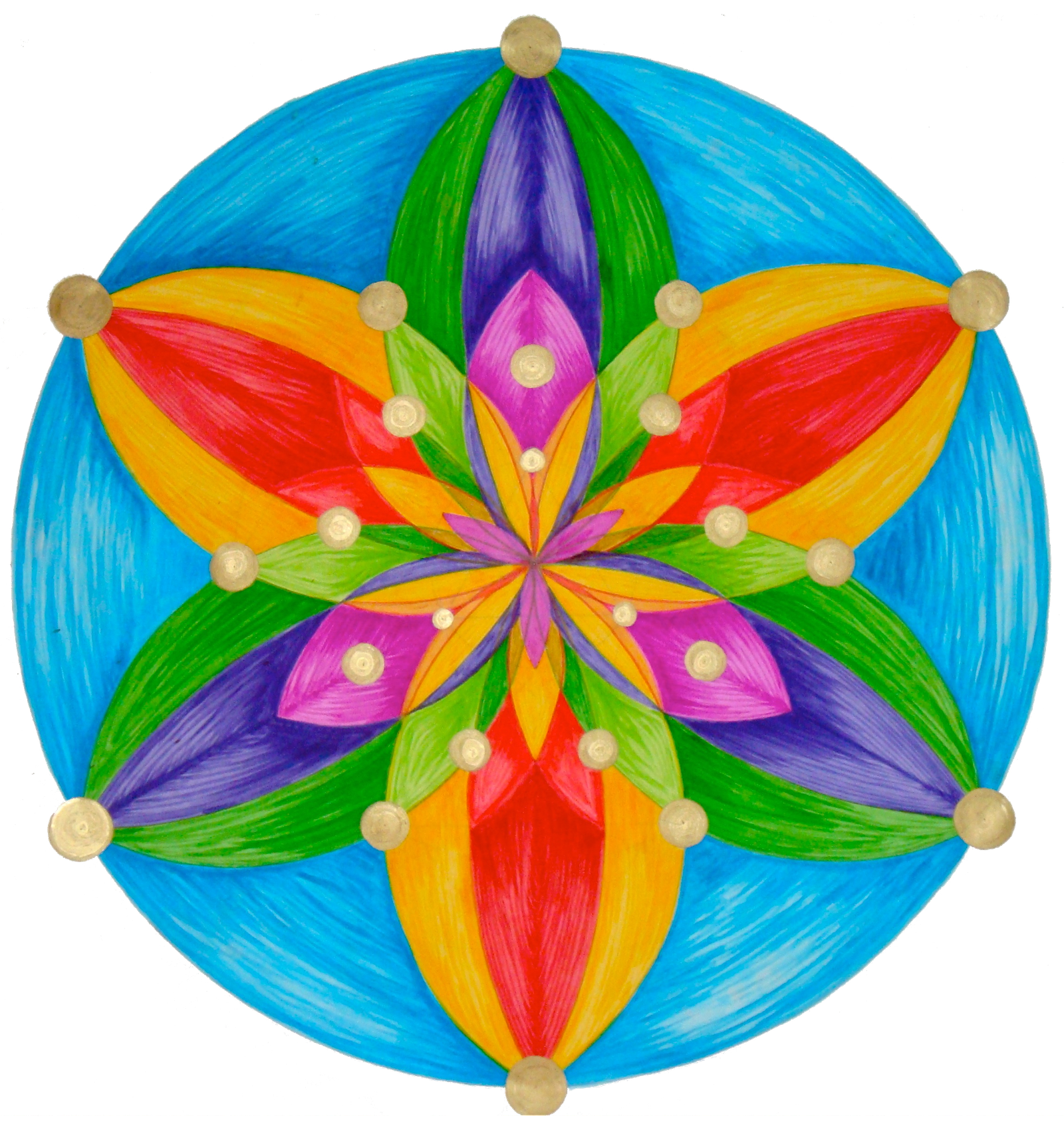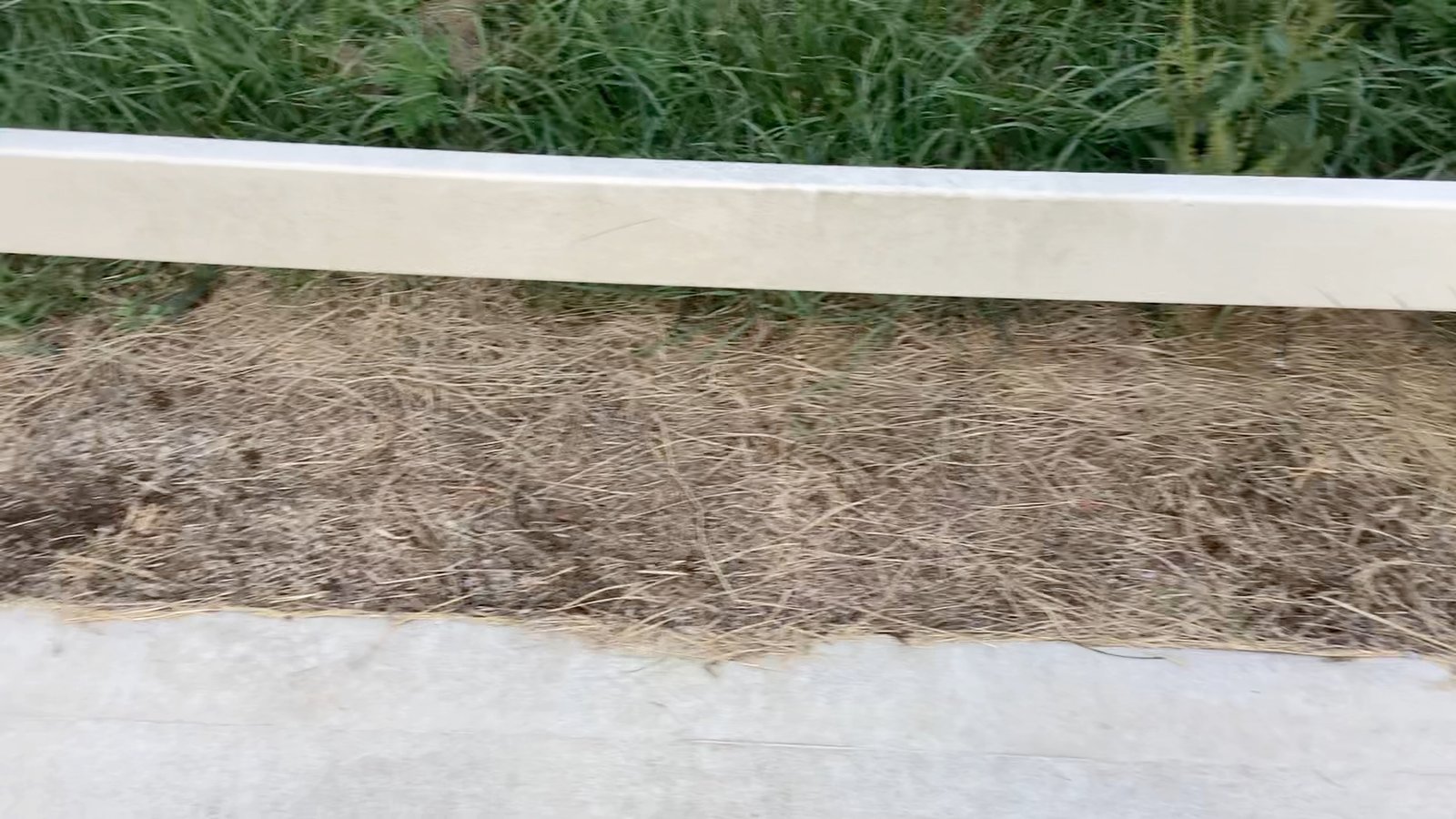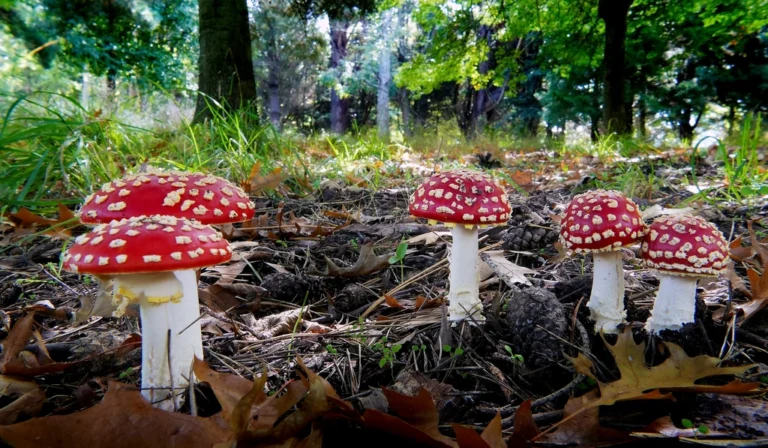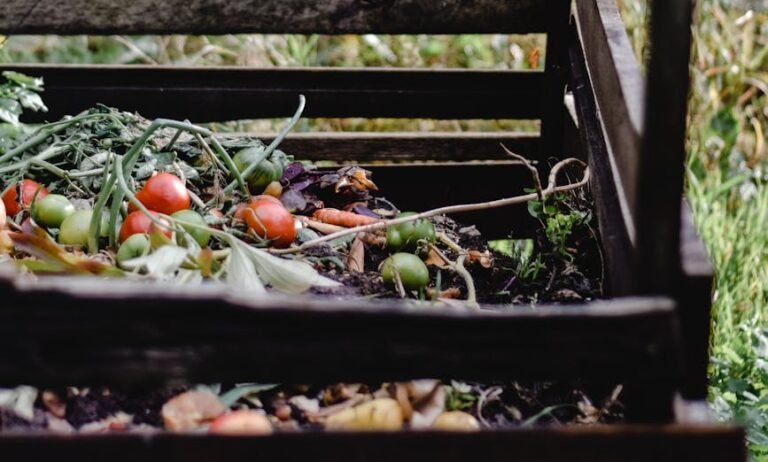How One Move to Tennessee Poisoned Us
The Awakening: When Paradise Becomes Poison
Picture this: You’ve just moved to what you thought would be your slice of heaven—rolling hills, friendly neighbors, and the promise of clean country living. But within weeks, you are poisoned by your neighbors and that shatters this idyllic vision entirely. What happened in Tennessee has further revealed the interconnected web of life, health, and community responsibility.
This came not through research or statistics, but through direct, visceral experience. One afternoon, Shantparv/Peter offered to help an overwhelmed neighbor with their mowing. He did not know that the hired “handymen” had just sprayed the entire fence line with Round Up that morning. He was wearing shorts due to the heat, and grass clipping blew up on his legs as he mowed. When he came in his legs were a strange bright red. At first we thought it was a unusual form of sunburn. But, it did not behave like sunburn. I realized that I had seen the man spraying the fence line. When I asked Shantparv/Peter if he had mowed next to the fence line, he said yes. The redness took a long time to go away, even forming strange whelps that oozed.
It did finally go away. Until Shantparv/Peter had to have a surgery on his sinus. The drugs they gave him in the surgery cause the rash to reappear. At first we thought this was maybe bacterial, and treated it as such. The more we did that, the worse it got, forming open wounds and spreading across large portions of his body. Finally, we treated it as a poisoning and it went away. The people who had ordered their helpers to spray denied it could possibly have any link to the Round Up.
Then, a few weeks ago, the spraying commenced. Within 1 day his rash returned. Now, if he gets anywhere near it, he breaks out. If you are wondering about any caring coming from those who want this sprayed in his vicinity. The answer is no, they do not care if they are poisoning him or anyone else.
Now, driving through these lush green hillsides, we see many neighbors spraying large areas of land with poison. This is done at roughly the same time. It represents the systematic use of what has become America’s most ubiquitous agricultural poison: Roundup. But this isn’t just happening on farms. This is residential. This is everywhere. And this is creating a cascade of consequences that most people simply cannot see.

The Personal Price of Pervasive Poison
When Peter was poisoned by Roundup exposure last year, we thought it was an isolated incident. We believed it was a one-time reaction that would heal and disappear. We were wrong. What we discovered is that these agricultural toxins don’t simply wash away like soap. They embed themselves into the very fabric of our biological systems. Researchers now call this “body burden.” It is the accumulated toxic load that our organs must constantly process.
Every single time spraying occurs in our vicinity, Peter’s rash reappears. Not sometimes. Every time. This isn’t coincidence. It’s biological testimony to a darker truth. These poisons are persistent, pervasive, and profoundly disruptive to human health. His skin acts as a living barometer for environmental toxicity. It reveals what’s happening inside all of us at levels we cannot see. We may not immediately feel these effects.
The medical literature on glyphosate (Roundup’s active ingredient) reveals numerous health impacts. Most people never connect these impacts to their neighborhood spraying habits. We’re talking about endocrine disruption, gut microbiome destruction, potential carcinogenic effects, and neurological impacts that accumulate over time. But here’s what’s most disturbing: the synergistic effects when multiple agricultural poisons combine in our bodies and environment.
The Spiritual Paradox: Poisoning the Kingdom
Here’s where this story takes an strange turn. Tennessee proudly claims one of the highest concentrations of Christians in America. Churches dot the landscape like wildflowers, and biblical values are woven into the cultural fabric. Yet there’s a profound disconnect between proclaimed faith and practiced stewardship.
Genesis 1:28 speaks of dominion over creation, but dominion doesn’t mean domination—it means responsible caretaking. When we systematically poison the soil, water, and air, we’re not exercising godly dominion. We are participating in what can only be called ecological blasphemy. We’re poisoning the very kingdom we claim to serve.
This isn’t about imposing religious beliefs on others. It is about recognizing that our actions have spiritual as well as physical consequences. When someone claims to love God while simultaneously poisoning God’s creation, there’s a fundamental misalignment between belief and behavior that demands examination.
The fruit of poisoning is disease, death, and environmental degradation. Is this really the legacy we want to leave for our children and grandchildren?

The Hidden Web: How Backyard Spraying Affects the Entire Ecosystem
Most people operate under the illusion that what they do on their property stays on their property. This represents a fundamental misunderstanding of how ecosystems actually function. When you spray Roundup, 2,4-D, or any agricultural poison, you’re not just affecting your immediate area. You are participating in a complex web of contamination that extends far beyond your property lines.
Here’s the reality: these chemicals don’t respect boundaries. They move through:
Soil Systems: Glyphosate and other herbicides alter soil microbiology, killing beneficial bacteria and fungi that plants depend on for nutrient absorption. This creates a cascade effect that weakens entire plant communities, making them more susceptible to disease and environmental stress.
Water Cycles: Every molecule of poison sprayed eventually enters the water system. Through rainfall, runoff, and groundwater movement, these toxins travel through rivers, streams, lakes, and ponds. They evaporate and fall again as contaminated precipitation, creating a perpetual cycle of environmental poisoning.
Air Quality: Recent studies show that agricultural chemicals can become airborne during application and for hours afterward. Your neighbor’s spraying literally becomes the air you breathe, the water you drink, and the soil that grows your food.
Food Chains: These poisons bioaccumulate, meaning they concentrate as they move up the food chain. The insects, birds, and animals that depend on treated areas carry these toxins in their bodies, affecting reproduction, behavior, and survival rates.
The Illusion of Individual Freedom
Perhaps one of the most dangerous myths perpetuated in our culture is that individual property rights grant unlimited freedom to poison the environment. This represents a fundamental misunderstanding of how rights actually work in an interconnected system.
Your right to spray poison on your property directly conflicts with my right to clean air, water, and soil. When your actions create health consequences for others, you’re not exercising freedom—you’re imposing your choices on unwilling participants who never consented to being poisoned.
True freedom requires responsibility. True property rights must be balanced with community health. When we frame environmental poisoning as a personal choice, we’re essentially arguing that one person’s convenience is more important than another person’s health and wellbeing.
This isn’t about government overreach; it’s about recognizing that we live in a shared environment where individual actions have collective consequences. The atmosphere doesn’t recognize property lines. The water table doesn’t respect fences. The soil microbiome doesn’t acknowledge ownership boundaries.


The Science of Systemic Toxicity
Let’s examine what these agricultural poisons actually do to biological systems. The effects are far more complex and devastating than most people realize.
Glyphosate (Roundup): Originally patented as an antibiotic, glyphosate disrupts the shikimate pathway in plants and bacteria. In humans, this means it can alter our gut microbiome—the collection of bacteria that regulates immunity, mood, and overall health. Studies have linked glyphosate exposure to increased rates of cancer, reproductive problems, and neurological disorders.
2,4-D (Dicamba): This herbicide is a synthetic auxin that causes uncontrolled growth in plants, literally causing them to grow themselves to death. In humans, it’s been linked to lymphoma, soft tissue sarcoma, and reproductive issues. It’s also highly volatile, meaning it can drift for miles after application.
Atrazine: One of the most widely used herbicides in America, atrazine is a known endocrine disruptor that can alter hormonal function even at extremely low doses. It’s been linked to birth defects, cancer, and reproductive problems in both humans and wildlife.
Neonicotinoids: These systemic insecticides are absorbed by plants and expressed in pollen, nectar, and other plant tissues. They’re devastating bee populations and other pollinators, but they also affect human neurological function, particularly in developing children.
The real danger isn’t just individual chemicals—it’s the synergistic effects when multiple poisons combine in our bodies and environment. These interactions can amplify toxicity by orders of magnitude, creating health impacts that are virtually impossible to predict or prevent.
The Accumulation Effect: Why Your Body Becomes a Toxic Warehouse
Modern humans carry a chemical burden that’s unprecedented in human history. The average person has over 700 synthetic chemicals in their body at any given time. Many of these chemicals didn’t exist 100 years ago. Agricultural poisons represent a significant portion of this toxic load.
Unlike natural toxins that our bodies have evolved to process, synthetic chemicals often accumulate in fat tissues, organs, and bones. They can remain in our systems for decades, constantly challenging our detoxification pathways and creating chronic inflammation.
Children are particularly vulnerable because their developing systems are less capable of processing these toxins. Pregnant women pass these chemicals to their unborn children, meaning babies are born pre-polluted with industrial chemicals. This represents a form of involuntary poisoning that affects generations.












The Ripple Effect: How Poisoning Spreads Through Communities
When we understand systems thinking, we realize that poisoning isn’t just an individual health issue. It’s a community crisis. It affects everyone differently but touches everyone eventually.
Healthcare Systems: Communities with high agricultural chemical use typically have higher rates of cancer, neurological disorders, and reproductive problems. This strains healthcare systems and increases costs for everyone.
Economic Impacts: Environmental poisoning reduces property values. It affects tourism. It can devastate local ecosystems that support fishing, hunting, and outdoor recreation industries.
Social Consequences: Chronic illness from environmental toxins creates social stress, family dysfunction, and community division. When people don’t understand the source of their health problems, they often blame themselves or seek expensive medical treatments that don’t address root causes.
Educational Effects: Children exposed to agricultural chemicals often experience learning difficulties, attention problems, and behavioral issues that affect their educational outcomes and future potential.
The Myth of Necessity: Alternatives That Actually Work






One of the most persistent myths about agricultural chemicals is that they’re necessary for food production and landscape maintenance. This represents a fundamental misunderstanding of how healthy ecosystems actually function.
Regenerative Agriculture: Farmers worldwide are proving that chemical-free methods can produce higher yields while improving soil health, water quality, and biodiversity. These systems work with natural processes rather than against them.
Integrated Pest Management: Instead of prophylactic spraying, IPM uses targeted approaches that minimize chemical inputs while maintaining crop health. This includes beneficial insect releases, crop rotation, and habitat management.
Organic Landscaping: Healthy lawns and gardens don’t require chemical inputs. They require understanding of soil biology, plant selection, and natural pest management techniques.
Permaculture Design: This approach creates self-sustaining systems that eliminate the need for external inputs while producing food, medicine, and beauty.
The Path Forward: Transformation Through Understanding
The solution to our agricultural poison crisis isn’t just about stopping harmful practices. It’s about understanding and implementing systems that work with natural processes rather than against them.
Individual Actions: Every person can choose to eliminate chemical inputs from their property. This immediately reduces toxic load for themselves and their neighbors while supporting healthier ecosystems.
Community Education: Most people spray chemicals because they don’t understand alternatives. Education about natural systems can transform communities from toxic to regenerative.
Policy Changes: Local governments can implement ordinances that protect community health while respecting property rights. This includes notification requirements, buffer zones, and support for chemical-free alternatives.
Economic Incentives: When communities understand the true costs of chemical use—healthcare expenses, environmental damage, and reduced quality of life—they can create economic incentives for healthier practices.
The Interconnected Truth: What You Do to Others, You Do to Yourself

Perhaps the most profound insight from systems thinking is that we’re all connected in ways that make individual and collective wellbeing inseparable. When you poison the environment, you poison yourself. When you heal the environment, you heal yourself.
This isn’t mystical thinking—it’s biological reality. The water you contaminate becomes the water you drink. The air you pollute becomes the air you breathe. The soil you poison becomes the food you eat.
But the connections go deeper than physical health. When we participate in systems that harm others, we create psychological and spiritual consequences that affect our own wellbeing. When we participate in systems that heal and support life, we experience the benefits of that positive participation.
The Fruit of Our Actions: What Legacy Are We Creating?

Jesus said, “By their fruits you will know them.” What fruit are we producing when we systematically poison the environment? What legacy are we leaving for our children and grandchildren?
The fruit of poisoning is disease, environmental degradation, and social conflict. The fruit of regenerative practices is health, abundance, and community resilience.
This isn’t about perfection or judgment—it’s about honest assessment of consequences and conscious choice about the kind of world we want to create.
The Call to Transformation
The agricultural poison crisis represents both a challenge and an opportunity. It’s a challenge because it requires us to change deeply ingrained habits and assumptions. It’s an opportunity because it offers a pathway to healthier, more resilient communities.
For those who claim Christian values, this is particularly important. Environmental stewardship isn’t optional—it’s a fundamental expression of faith. We cannot claim to love God while poisoning God’s creation. We cannot claim to love our neighbors while poisoning their air, water, and soil.
For everyone else, this is about recognizing that we live in an interconnected system where individual actions have collective consequences. We can choose to participate in systems that heal and support life. Or,we can continue participating in systems that poison and destroy.

The Time for Action Is Now
The good news is that transformation is possible. Communities around the world are proving that we can create abundant, healthy, beautiful environments without chemical inputs. We can produce food that nourishes rather than poisons. We can create landscapes that support rather than destroy biodiversity.
But this requires conscious choice and committed action. It requires understanding that our individual choices matter precisely because they’re part of a larger system. It requires recognizing that true freedom comes from taking responsibility for our impacts on others.
The question isn’t whether we can afford to change—it’s whether we can afford not to change. The costs of continuing current practices are becoming increasingly clear: environmental degradation, human health crises, and social conflict.
The benefits of transformation are equally clear: healthier communities, more resilient ecosystems, and a legacy we can be proud to leave for future generations.
The Choice Before Us


Every day, we choose whether to participate in systems that poison or systems that heal. Every time we reach for a chemical spray, we’re making a choice about the kind of world we want to create.
The agricultural poison crisis isn’t just an environmental issue—it’s a spiritual, social, and economic crisis that touches every aspect of our lives. But it’s also an opportunity to create the kind of communities we actually want to live in.
We can choose to continue poisoning ourselves and our neighbors, or we can choose to participate in the healing and restoration of our shared environment. We can choose to create fruit that nourishes life, or we can continue creating fruit that destroys it.
The choice is ours. The time is now. The future depends on what we choose to do with the power we have in this moment.
What fruit will you choose to create?
This article represents a call to consciousness about the interconnected nature of environmental health and community wellbeing. The author encourages readers to research alternatives to chemical lawn and garden care and to engage in respectful dialogue with neighbors about shared environmental concerns.
Support Our Writing Journey
Your support keeps our words alive and our stories flowing. Every donation, no matter the size, helps us continue creating meaningful content, sharing important narratives, and maintaining our creative mission. By contributing, you’re not just supporting a writer, you’re investing in storytelling, creativity, and the power of words. Help us sustain our independent writing, fuel future projects, and keep our content accessible. Your generosity directly supports working writers and helps us continue our artistic work.
References: Health information based on peer-reviewed research available through PubMed and environmental health databases. Personal experiences shared for illustrative purposes only—consult healthcare professionals for individual concerns. For ongoing research: Environmental Working Group (ewg.org), Beyond Pesticides (beyondpesticides.org), National Institute of Environmental Health Sciences (niehs.nih.gov).
This exploration invites readers to consider their environmental choices through the lens of systems thinking and interconnection, recognizing that personal and planetary healing are inseparably woven together in the web of life.





This is all so true and extraordinarily frightening and disturbing. It literally boggles my mind that Round Up and so many other deadly poisons are still on the shelves. What is even more discouraging and shocking is, that such a large majority of people are still using so many of these demonic products). It is beyond heart breaking to think about how many children run and play in these sprayed area’s. Yes, it is time, that we all stand up and say, “NO!!!! “we no longer accept this lack of concern and total disrespect of our children and families”.